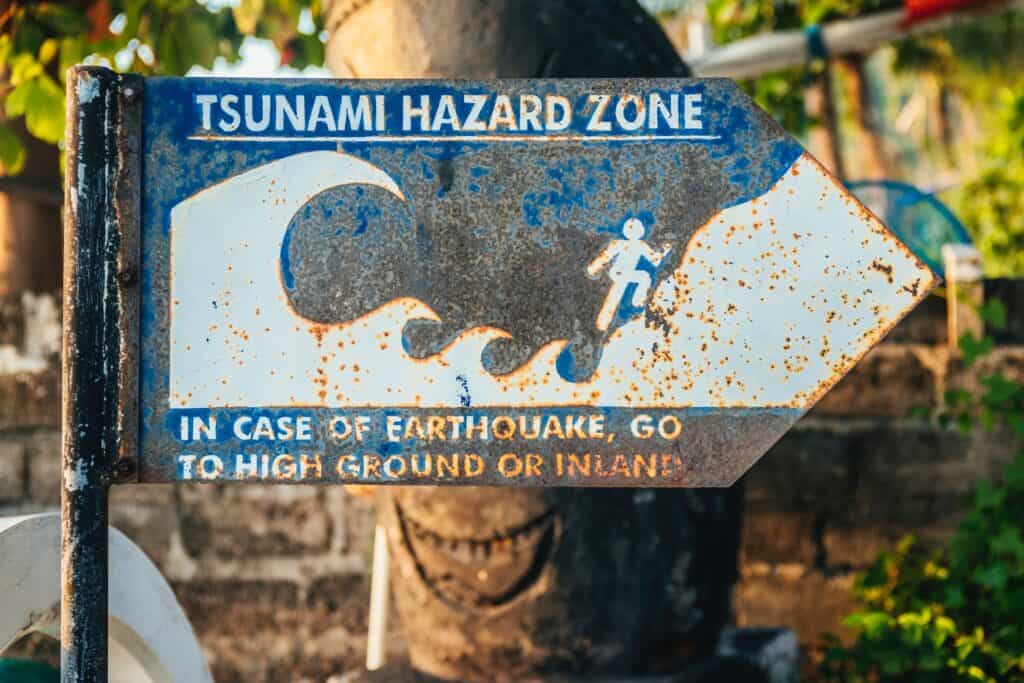On November 5, the Institute of Marine Affairs joined the global community in celebrating World Tsunami Awareness Day. As part of their awareness activities to commemorate the day, the Institute’s Research Officer, Christopher Alexis, wrote this story to highlight how addressing inequalities in awareness and preparedness can contribute towards a more resilient future.
Annually, World Tsunami Awareness Day (WTAD) is commemorated on November 5 with a series of activities and drills that are meant to serve as a reminder of the ever-present threat of tsunamis.
With coastal communities already facing increased threats from natural disasters associated with environmental phenomena like climate change, the possibility of tsunamis only adds to the importance of ensuring that inequalities in coastal communities are addressed for a resilient future.
For this reason, this year’s World Tsunami Day was themed “Fighting Inequality for a Resilient Future.”
United Nations: Tsunami Preparedness is Key
The United Nations has highlighted the need for the world to build upon its existing tsunami preparedness plans like early warning systems and disaster risk reduction strategies.

Tsunamis can be caused by underwater earthquakes, landslides, volcanic eruptions and, on rare occasions, the impact of a giant meteor on the ocean.
The waves generated can reach heights of over 30 m and pose a severe threat to coastal communities worldwide.
Striking with little warning, tsunamis can leave a trail of destruction as seen in those that occurred in Indonesia (2018), Chile (2014), Solomon Islands (2013) and Japan (2011).
By observing WTAD, the United Nations aims to foster cooperation among governments, organisations, and communities to enhance preparedness and reduce the loss of life and property.
The effects of tsunamis highlight the inequality within coastal communities where the vulnerable sections of society are most affected.
The 2023 WTAD activities focused on raising awareness about the underlying disaster risk drivers – poverty, inequality and vulnerability – that make tsunamis more deadly for those most at risk.

The importance of early tsunami detection and rapid responses
Given tsunami waves travel at remarkably fast speeds, essential preparedness measures include – but are not limited to – the installation of warning systems, educating communities about evacuation procedures, and creating resilient infrastructure to withstand the impact of tsunamis.
Large tsunamis pose significant threats to human health, property, infrastructure, resources, and economies, which means their effects are long-lasting and far-reaching beyond coastal communities.
Many vulnerable countries like Japan have invested in tsunami warning systems that use a combination of seismometers, oceanography buoys, and sirens to provide alerts. These systems have proven instrumental in saving lives during tsunami events.
Tsunami Preparedness in the Caribbean
The Intergovernmental Coordination Group for the Tsunami and Other Coastal Hazards Warning System for the Caribbean and Adjacent Regions (ICG/CARIBE-EWS) is supplied with information from the University of the West Indies, Seismic Research Centre.

Updates from the ICG/CARIBE-EWS are shared with the disaster management agencies across the Caribbean.
In Trinidad and Tobago, the Office of Disaster Preparedness Management held discussions in 2019 with several stakeholders to update the country’s National Tsunami Standard Operating Procedures (SOPs) that inform the development of Community Tsunami Protocols and Guidelines.
The time to act on tsunami preparedness is now
With education being a key pillar in tsunami preparedness, raising awareness about the warning signs and evacuation procedures (signage and evacuation maps seen in coastal areas) is crucial for at-risk coastal communities.
As such, all members of these communities must understand the dangers posed by tsunamis and be aware of the safety measures to follow.

WTAD 2023 is a call to action which urges governments, organisations, and communities to prioritise preparedness, reduce inequality and increase resilience because, while tsunamis are unavoidable, their impact may be reduced by quick and effective response to warnings.
In a world vulnerable to natural disasters, the theme of this year’s WTAD serves as a reminder that the power to protect lives and livelihoods lies in our collective commitment to be prepared, reduce inequality and increase resilience.
Together, we can ensure that communities along our coastlines are safer and better equipped to face the unpredictable forces of the sea.

Here are some suggested ways that inequality can be reduced among societal groups:
- Differently abled persons: flags can be used for the hearing impaired as they would not be able to hear the sirens; evacuation routes should be accessible to those with walking impairments; first responders should be trained to use sign language
- Women: should be comfortable and safe to go to shelters
- Youth and children: teachers/schools should have regular tsunami drills
- Elderly: able bodied persons should assist the elderly
- Migrants: warning messages should be in relevant languages
As World Tsunami Day approaches, the IMA would like to remind everyone of the procedure in the event of a tsunami warning:
- Get to high ground as far inland as possible
- Be alert to signs of a tsunami, such as a sudden rise or recession of ocean waters
- Listen to emergency information and alerts from reliable sources such as the ODPM
- Always follow the instructions from local emergency managers.
Support the #GetToHighGround initiative which aims to accelerate action on early warning systems for tsunamis and encourages partners to raise awareness of tsunami risk by organising a drill, fun run or walk of their tsunami evacuation route to #GetToHighGround. The initiative is a brainchild of the tsunami Ready programme by the Intergovernmental Oceanographic Commission of the United Nations Educational, Scientific and Cultural Organization (IOC UNESCO Tsunami Ready programme). More information on the #GetToHighGround Campaign can be found here: https://tsunamiday.undrr.org/





